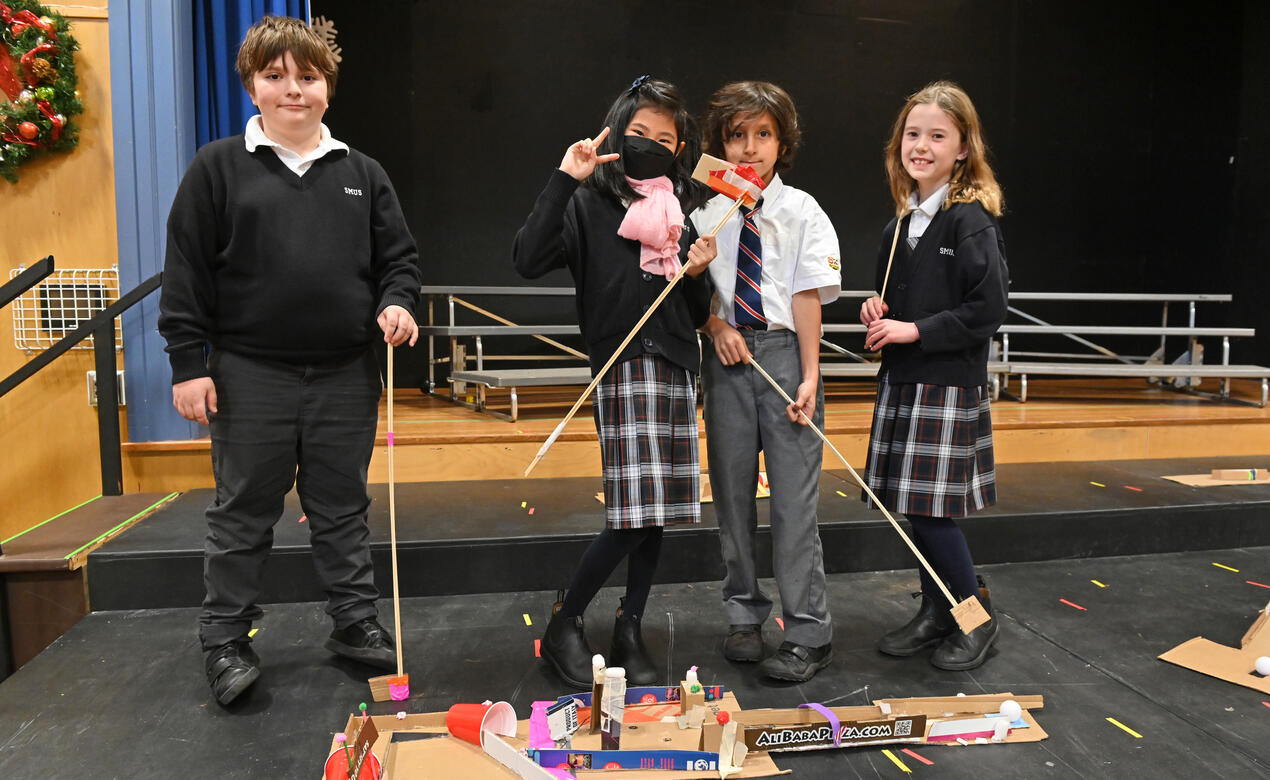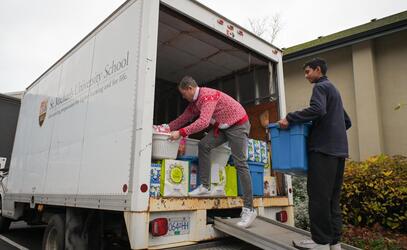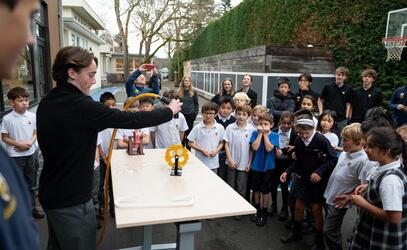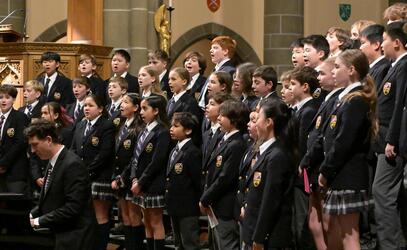
What does it take to build a mini golf course? Well, beyond cardboard, tape, and red plastic cups to act as holes, it takes a lot of creativity and perseverance.
Grade 3 students recently designed their own course and opened it up to their classmates at the Junior School.
"It was really fun for me," says Liuchina, who is one of 14 students who joined the Grade 3 Creators Club.
The idea for a mini golf course came from associate teacher Ben Hosios, who leads the club in the Imagination Lab.
"A big part of any Makerspace or Creators Club, and a big part of the STEAM approach at SMUS, is the design cycle. Part of that cycle is iterating; going back and editing your work or approaching it in a different way," Ben says. "A mini golf course is a really tangible way that students can come back something and say, 'I need to improve it in this way.' And they also want to iterate and test their own work because mini golf is – as Liuchina said – really fun!"
Building Skills – and a Mini Golf Course
Many of the eager students signed up to join Creators Club because their passion for creating was sparked in earlier grades.
"I love building things. In Grade 2, ADST (Applied Design, Skills and Technologies) was my favourite subject. I thought it would be a cool experience, since in Grade 3 we have Digital Skills instead, to go back and do some more building," says Zoey.
"I always save a lot of cardboard boxes at home and I like making stuff with them. But I wanted to have more time to build actual stuff," adds Ashwin.
Before building and designing their mini golf holes, Ben challenged the students to create, in their minds, eight different holes by doing a crazy eight brainstorm.
"We had 30 seconds to come up with an idea for a hole and then we had to move on and draw another idea. At the end of that session, everyone had eight different ideas," he says.
Students then used those ideas – the obstacles, the layouts – as jumping off points to work together to design the best holes they could.
"None of my holes came out like any of my first ideas," says Alex, acknowledging that when putting ideas into practice, unexpected challenges would surface. This is where iterating comes in.
"Basically we get stuck and then we have to wiggle our way through it," he says.
"I would call that 'pushing through perseverance,'" adds Zoey. "When something is hard but you keep going and you don't let it bother you."
The other part of the design cycle that students had to keep top of mind was empathy – looking at someone else's needs and seeing how your product fits those needs.
"A mini golf course does that in a really interesting way. We spoke a lot during our planning sessions about how students from Kindergarten to Grade 4 will be playing and what we need to do to be empathetic to their needs," Ben says. "How did our golf clubs need to take that into consideration? How did the size or the difficulty of the course need to take that into consideration? It was really wonderful to see how students approached that problem."
Despite the challenges presented to the Creators Club members, the students pushed through and overcame them to design and build a fun and challenging course for their classmates to enjoy.
"I'm really proud of all of their hard work and of the learning that happened," Ben says. "Through the whole process you could really see that learning in action. It was also really evident to see that perseverance come through in such an engaging way. They're coming to Creators Club to have fun, but they were also so motivated to learn and create the best possible course they could for their classmates. It makes me really proud of them."


